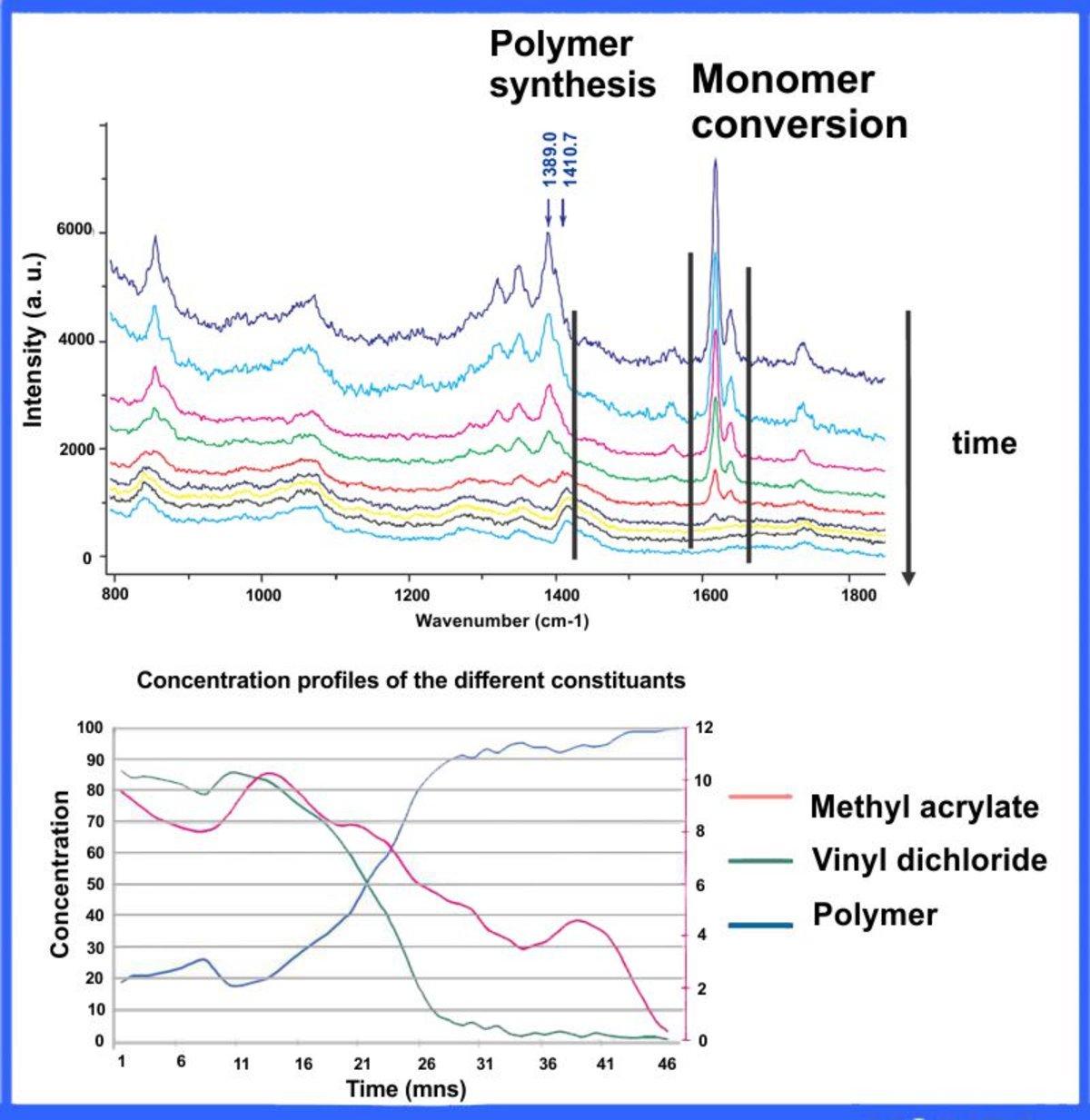

Real-time monitoring of emulsion polymerization by Raman spectroscopy has been performed. In order to extract information concerning the progress of the reaction, modelling under LabSpec was done. For this, .model. spectra were selected. The deconvolution operation of LabSpec provides a calculation of the contributions of each of these model spectra to the current spectrum. The concentration profiles of the constituents during the reaction are drawn from the quantitative values derived from the deconvolution.
Real-time monitoring of emulsion polymerization by Raman spectroscopy has been performed.
Raman spectroscopy has advantages over other techniques being implemented for process monitoring. It is wellsuited for emulsion polymerization reactions because the aqueous solvent does not interfere with the analyte signal by either contributing to the Raman signal or by masking the analyte signal by self-absorption processes. In addition, as it is a scattering phenomenon, the turbidity of an emulsion process is not a severe impediment.
On the other hand there are experimental difficulties arising from the possibility that there is fluorescence emission interfering with the Raman signal, and from the difficulties in extracting signals through windows in reactor walls or in slip streams. In order to avoid these problems a near infrared excitation laser (785 nm) and an immersion probe dipped directly in the reaction medium have been used.
Two parallel ways for data analysis have then been undertaken. The first is based on a mathematical deconvolution of the Raman bands whereas the second relies on more sophisticated multivariate analysis (Chemometrics).
Confocal Raman & High-Resolution Spectrometer
HORIBA제품의 자세한 정보를 원하시면, 아래의 양식에 내용을 입력을 부탁드립니다.
